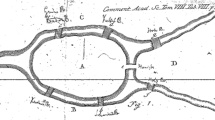Abstract
This paper offers an argument in favour of a Lewisian version of concretism that maintains both the principle of material inheritance (according to which, if all the parts of an object x are material, then x is material) and the materiality-modality link (that is, the principle that, for every x, if x is material, then x is possible).
Similar content being viewed by others
Notes
See, for instance, Lewis (1986), McDaniel (2004), and Yagisawa (2010). The notion of materiality has no explicit role in Lewis (1986) and Yagisawa (2010). Still, it does not seem to us implausible to read their work as implicitly involving this notion. We will say something more on Lewis’ treatment of materiality in the next few lines. By contrast, many explicit references to the notion of materiality can be found in McDaniel (2004). If we understand him right, he takes materiality, as in “material object”, to be a primitive notion, or at least he does not offer an explicit definition.
Cf. “Maybe, as I myself think, the world is a big physical object; or maybe some part of it are entelechies or spirits or auras or deities or other things unknown to physics.” (Lewis 1986: 1)
In accordance with Quine’s (1948) view, here we take terms such as ‘object’, ‘thing’, and ‘entity’ to refer to something existing. More generally, we operate in a Quinean framework, in which the notion of existence is univocal and there are no objects, things or entities that do not exist. See also van Inwagen (2009).
The considerations we make here for MI are possibly even more stringent for a weaker principle than MI, namely (MI*) If all the parts of an object x are material, then x is material (which follows from MI, given very plausible assumptions connecting the notion of mereological sum and that of part). Thanks to the kind suggestion of an anonymous referee, we decided to adopt the stronger principle, since it is not less plausible, and because it allows us to avoid certain awkward assumptions later on (see note 8).
After having struggled with the disambiguation of four different ways of interpreting the concrete vs abstract distinction, Lewis concludes that “it seems that indeed I should say that worlds as I take them to be are concrete; and so are many of their parts, but perhaps not all” (1986: 86).
Note that MM by itself could be accepted by actualists as well. The reason is simple. The actualist is willing to hold that if x is material, then x is actual. And if x is actual, then a fortiori x is possible. What the actualist disagrees on is the idea that something might be possible without being also actual. However, here we are interested in how a concretist can exploit it to elucidate her framework.
Even if, after the development of modal logic, the majority of approaches to modality exploit the machinery of quantification over possible worlds for explicatory (or elucidatory) purposes (notable exceptions being Barwise and Perry 1983), not all of them aim at reducing modal notions to non-modal ones. Approaches such as Forbes (1985), for instance, explicitly assume irreducibly modal properties as grounds of modal truths, and hence count as anti-reductionist. However, certain forms of actualism can be seen as reductionist—at least to a certain extent. Plantinga (1974), for instance, can be seen as an attempt to construe modal notions in terms of individual essences (and set theoretical entities), Adams (1981) as an analogous reductive attempt in terms of world stories, and the proposal of Davies and Humberstone (1980) can be seen as an attempt to reduce metaphysical modality to conceptual connections.
Notice that if we had endorsed the weaker principle (MI*), given that the vast majority of trans-world entities have other trans-world entities as parts, in order for our example (and any other involving middle size objects) to go through, we should have made the implausible assumption that noses and donkeys are mereological simples.
As he puts it, “transworld individuals are [...] impossible individuals” (1986: 211, italics in the original).
References
Adams, R. M. (1981). Actualism and thisness. Synthese, 49, 3–41.
Barwise, J., & Perry, J. (1983). Situations and attitudes. Cambridge: Bradford Books, MIT Press.
Davies, M., & Humberstone, I. L. (1980). Two Notions of Necessity. Philosophical Studies, 38, 1–30.
Divers, J. (2002). Possible worlds. London: Routledge.
Divers, J. (2014). The modal status of the Lewisian analysis of modality. Mind, 123, 861–872.
Forbes, G. (1985). The metaphysics of modality. Oxford: Oxford University Press.
Lewis, D. (1986). On the plurality of worlds. Oxford: Blackwell.
McDaniel, K. (2004). Modal realism with overlap. Australasian Journal of Philosophy, 82, 137–152.
Plantinga, A. (1974). The nature of necessity. Oxford: Oxford University Press.
Quine, W. V. O. (1948). On What There Is. In W.V.O. Quine. 1953. From a Logical Point of View (pp. 1–19). New York: Harper.
van Inwagen, P. 2009. Being, existence, and ontological commitment. In D.J. Chalmers, D. Manley, R. Wasserman (eds.). 2009. Metametaphysics: New essays on the foundations of ontology. Oxford: Oxford University Press, pp. 472–506. Reprinted in P. van Inwagen. 2014. Existence: Essays in Ontology (pp. 50–86). Cambridge: Cambridge University Press.
Yagisawa, T. (2010). Worlds and individuals, possible and otherwise. Oxford: Oxford University Press.
Funding
Giuliano Torrengo and Samuele Iaquinto have been funded by REGIONE LOMBARDIA and CARIPLO FOUNDATION (Project 2015-0746-TEMPFRAME, 15-5-3007000-601). Giuliano Torrengo has also received funding from the Project UNIMI per ERC (15-6-3007000-2021), while Samuele Iaquinto has received funding from FRATELLI CONFALONIERI FOUNDATION (Postdoctoral Fellowship 2018/2019).
Author information
Authors and Affiliations
Corresponding author
Additional information
Publisher's Note
Springer Nature remains neutral with regard to jurisdictional claims in published maps and institutional affiliations.
Rights and permissions
About this article
Cite this article
Iaquinto, S., Torrengo, G. Materiality, parthood, and possibility. Erkenn 87, 1125–1131 (2022). https://doi.org/10.1007/s10670-020-00233-4
Received:
Accepted:
Published:
Issue Date:
DOI: https://doi.org/10.1007/s10670-020-00233-4



